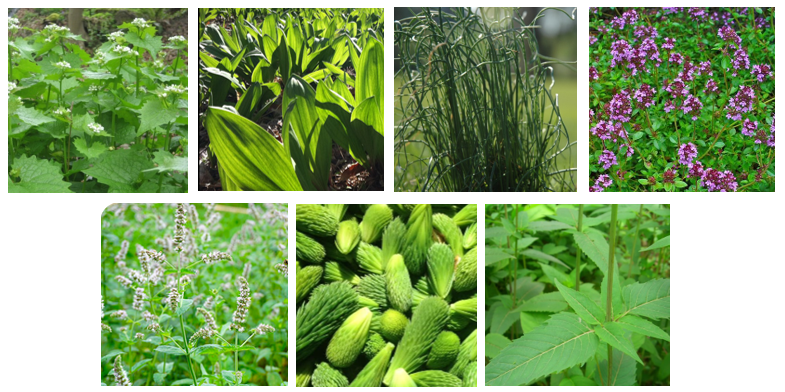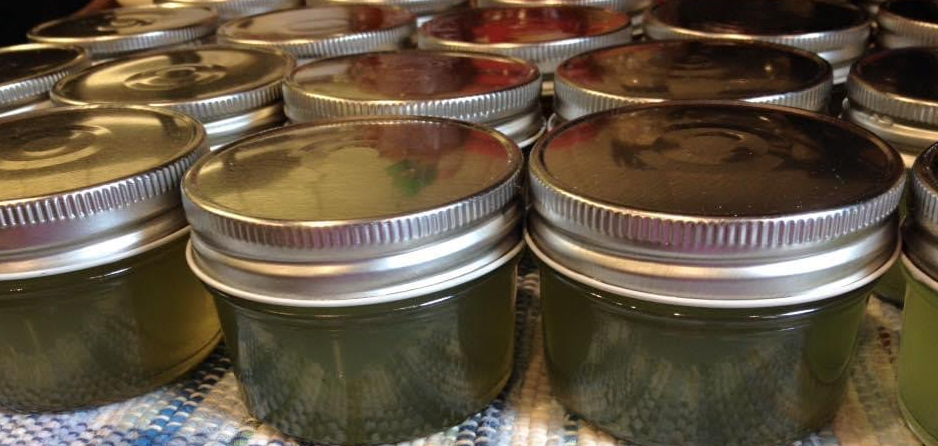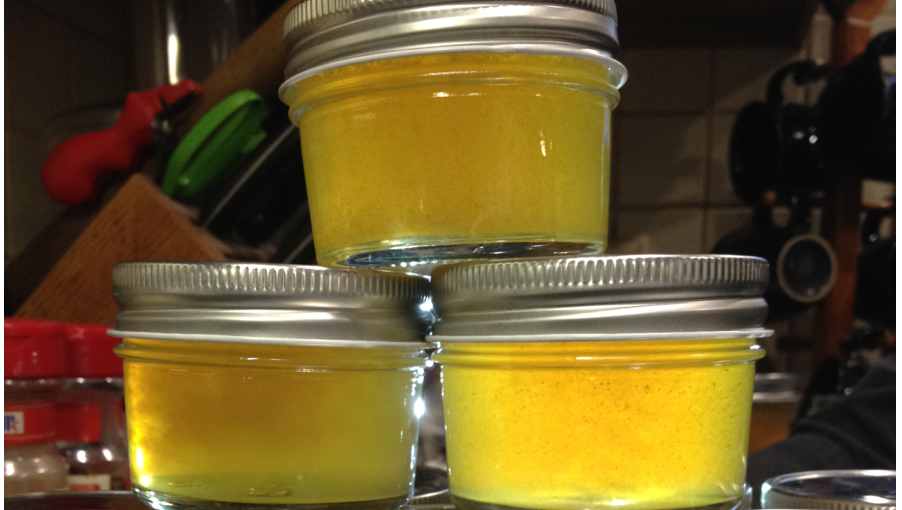Wild herb jellies are a rare and unusual treat, and oh so yummy. Savory herb jellies are especially good as marinades, tossing with pasta, or topping a bagel and cream cheese, while sweet herb jellies go wonderfully on a PB&J and make delicious ice cream sauces.
Wild herbs that can be turned into savory jelly include garlic mustard, ramps, chives, and thyme. Sweet jellies can be made from wild mint, spruce tips, and wild bee balm leaves. Gather your herbs early in the morning if you can, preferably NOT just after a rain. You can use the entirety of the plant except for the roots, or you can strip off the leaves and discard the stems. When you bring your treasures home, wash them well to remove any dirt or bugs hiding in there. If you can’t deal with them right away, get them into the fridge, in double plastic bags or in glass containers (unless you want your entire refrigerator to smell like the herbs you just picked). Most herbs other than garlic mustard can sit happily in the fridge for several days, or you can freeze them if you’re not going to use them in the near future.
Just like flower petals, herbs have very little acid and no natural pectin, so you have to prepare them differently than normal fruit jellies. Basically you make an infusion, kind of like a tea, and you use that in place of fruit juice.
To make most savory herb infusions (garlic mustard, chives, wild thyme): combine 2 cups of *packed* chopped herbs with 3 ½ cups of boiling water and ½ cup of white vinegar.
To make a ramp infusion: combine 2 cups of *packed* chopped leaves with 3 ¼ cups of boiling water and ¾ cup of apple cider vinegar.
To make a wild mint infusion: combine 2 cups of *packed* chopped leaves with 3 ¼ cups of boiling water and ¾ cup of apple juice.
To make a spruce tip infusion: combine 4 cups of chopped spruce tips with 4 cups of boiling water.
To make an infusion from wild bee balm leaves: combine 2 cups of *packed* chopped leaves, 2 cups of boiling water, and 2 cups of apple juice.
The vinegars and juices are in there because for safe canning, the end product of herb infusion + pectin + sugar must have a pH lower than 4.6. This is non-negotiable. I strongly advise herb jelly makers to buy an inexpensive pH meter with automatic temperature compensation to test each batch before canning. If the pH is too high, add more vinegar, juice, or food-grade citric acid until an appropriate pH is reached. Seriously, you don’t want to poison your friends and family.
For all herb jellies: Allow the infusion to ‘brew’ for 24 hours. Pour through jelly bag or multiple layers of cheesecloth to strain.
Savory Herb Jelly Recipe for garlic mustard, ramps, chives, and thyme
- 4 cups infusion
- 1 cup sugar
- 1/2 cup low sugar pectin (Sure-Jell and Ball both make a low-sugar pectin, and several companies sell online.)
Sweet Herb Jelly Recipe for mint, spruce tips, and bee balm
- 4 cups infusion
- 2 cups sugar
- 1/3 cup low sugar pectin
Be prepared for the jelly to take longer at a boil than you’re used to before it starts to gel. If it gets truly ridiculous you can add a little more pectin, but remember to recheck the pH if you do so. I usually get 10 four-ounce jars, plus or minus one.
Happy jelly making!




